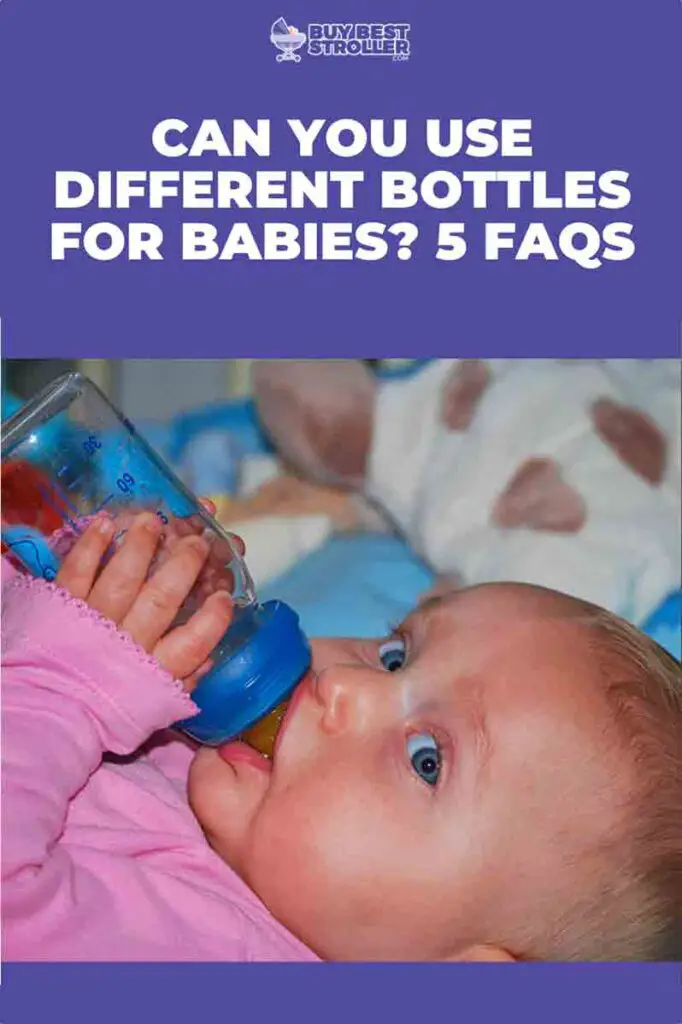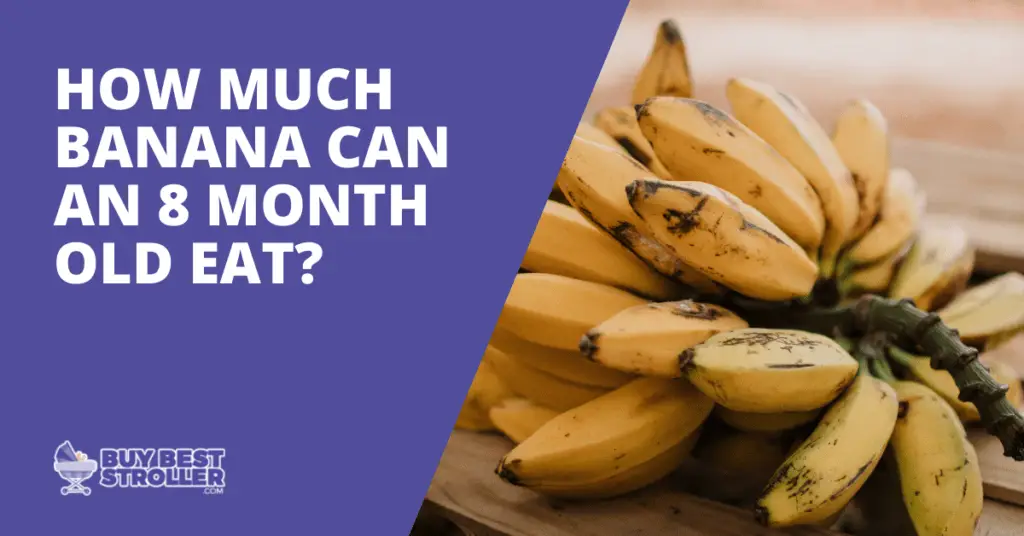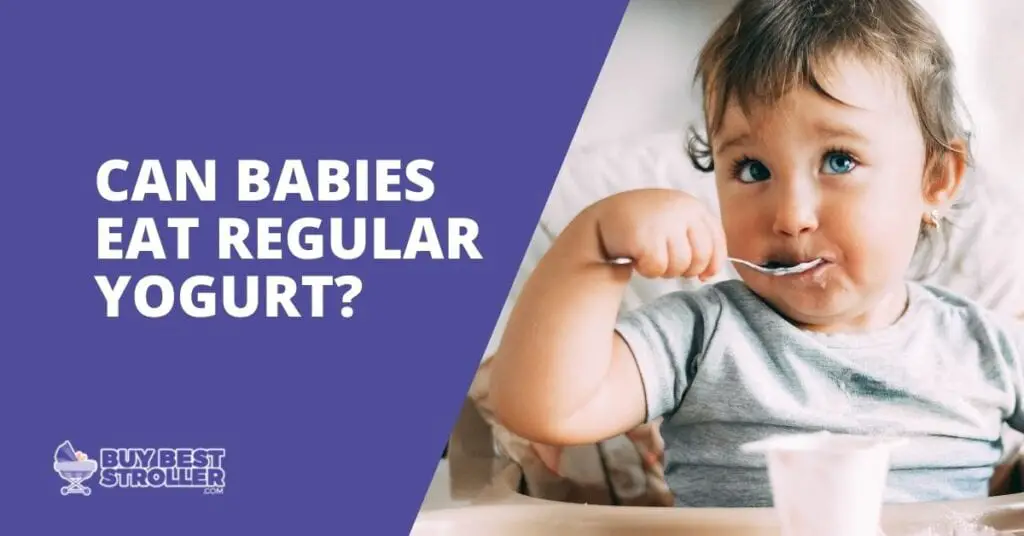Yes, you can use different bottles for babies. There are a variety of bottle types available on the market, and each has its own benefits and drawbacks. Some parents prefer to use glass bottles because they don’t contain harmful chemicals like BPA, which can leach into the milk.
However, glass bottles can be heavy and difficult to clean. If you are planning to save money, you can always check online for it.
Some parents prefer to use plastic bottles because they are lightweight and easy to clean. Bottle feeding your baby is a great way to ensure they get fed and grow up strong and healthy. Even though it may not be quite as good as breastfeeding, using the right kind of bottles for babies can make your life a lot easier.
Remember breastfed babies have fewer problems with diarrhea. breast milk is the best food for babies under six months of age.
Some plastic bottles contain harmful chemicals like BPA that can leach into the milk. So it’s important to choose a bottle made from safe materials like polypropylene or stainless steel. Whichever type of bottle you choose, make sure to sterilize it before each use.
Choosing Right Baby Bottle:
Picking the right type of baby bottle is an important decision if you want your child to be comfortable and enjoy their milk. The best bottles for babies are those that come in different sizes, shapes, materials, and flow rates so you can continue feeding them as they grow.
Before purchasing new feeding bottles, always check the safety and hygiene standards of these products.
You can also ask your child’s doctor or pediatrician who you should trust the most in purchasing high-quality feeding bottles.
Bottle-feeding your baby is a great way to keep them well-fed and healthy. The right bottles for your child can make all the difference.
For constant milk supply, you should pick a bottle that suits your child best. A lot of parents make the mistake of using any kind of old or spare baby bottles for their children.
Always remember that a baby’s feeding equipment should be specially designed for their needs.
For parents who are nursing their babies, it is best to purchase baby-bottle nipples that are closest in size and shape to the mother’s nipple so the transition will be easier for the baby when switching between breast and bottle.
Breastfeeding moms sometimes pump out milk and use bottles of smaller sizes to store it.
It is not a good idea to use older plastic bottles because they may contain harmful chemicals. Using older plastic bottles can cause your baby to be exposed to small amounts of BPAs, which may lead to developmental problems.
Bottle Material
Always check the material of the feeding bottle before buying them. There are mostly two different types of bottles. Baby bottles made from safe materials like polypropylene and stainless steel can provide a healthy and hygienic feed for your little one without fear of toxins seeping into their milk.
Glass bottles are another option to consider if you’re concerned about chemicals leaching into your baby’s milk, but they can be extremely heavy and difficult to clean.
Plastic bottles are lightweight but aren’t as durable, so it is best to avoid using them when feeding your baby solid foods for the first time.
Bottle shapes
Another factor in choosing a bottle that your child will like is its shape. When buying new bottles for babies that can be converted from bottles to sippy cups, look for ones with a softer spout. A standard bottle nipple will be too hard for your baby’s gums and new teeth when they start teething and can cause them some discomfort. It is advisable to check if the bottle is not blocking the baby’s mouth.
Baby Bottle Size
The size of the bottle is another important feature to consider before buying a bottle for your baby. At feeding time, the baby should have just enough milk in the bottle so that it doesn’t feel too heavy and uncomfortable when being held.
Babies usually drink 2-4 ounces of milk during their first year. There is two standard sizes of bottles available on the market, 4 and 8 ounces. Some parents even prefer to use smaller bottles; 2 or 3 ounces per feeding depending on their baby’s age and weight.
Newborns usually weigh around 7 pounds at birth and gain about a pound a month during their first two months in this world. Most pediatricians recommend using the smallest bottle size, two to four ounces, during the first month.
Bottle Nipples
If you are bottle feeding your baby, you should always use a clean bottle and nipple for each feeding to reduce the risk of infections. Nipples come in a variety of shapes and sizes depending on the age of your baby. When you’re bottle-feeding your infant for the first time, avoid using nipples that are too soft or too hard as they can cause discomfort. There also should be a thin membrane inside the nipple that allows your baby to get milk from the bottle while also using their jaw and tongue movements.
Look for a nipple with a medium level of stiffness when choosing a new one for your baby. Soft nipples are meant to prevent nipple confusion but they can be very easy for babies to remove, which can cause them to choke.
Nipples that are too hard can be difficult for newborns and babies just starting out on solid foods because they lack the oral motor skills needed to suck liquid from a bottle with such a strong flow.
Bottle volume
The amount of fluid in a bottle is measured in ounces, so you will need to choose a feeding bottle that can hold enough milk or formula for your baby’s age and weight. For example, newborns should have six to eight feedings a day while older babies who are eating solid foods would require fewer bottles of about two to three ounces at each feeding.
How many bottles do I need?
The number of bottles and nipples you’ll require will be determined on whether you’ll mostly bottle-feed or exclusively breastfeed. If you’re bottle-feeding, you’ll need around six to eight 4oz bottles because every feeding session takes one bottle.
If your baby feeds on breast milk only, then the number of bottles you’ll require will depend on how many times you are planning to pump throughout the day. You should have at least four additional bottles for pumping. This will ensure you always have enough milk in the freezer to feed your baby when they are at daycare.
For Baby growth and development, The baby bottles should be of medium level and it is suggested to be given at least 4 – 5 times for feeding the baby.
Here’s a helpful tip: If you’re using glass bottles for babies, consider buying the 6oz size because it is easier to thaw and heat up breast milk in smaller amounts than in half-pint or pint containers.
Here are some factors to consider while determining how many bottles to buy.
- Age of the child.
- Weight of the child or how much they eat at a time.
- How long do you go between feeding times?
- The number of feedings required by your baby each day.
You will need different bottles as per the age of your baby. When baby grows, they need bigger bottles to fulfill their need and hunger
Preparing a Newborn Bottle for Feeding
You should always sterilize your baby’s bottles before using them for the first time. It’s also a good idea to sterilize your child’s bottles once or twice a day, after each feeding.
You can use any of these three convenient methods to sterilize your baby’s bottles.
1. Using boiling water
Fill a pot with enough cold tap water to top it to the brim.
Heat it until bubbles start breaking on the surface of the water.
Add two to three teaspoons of dishwashing soap or baby bottle sterilizer solution, and stir to mix thoroughly.
Cover your baby’s bottles with distilled water in a large bowl or pot (so that it is deep enough for your bottles).
Remove the bottles once the water boils and let them cool for at least five minutes.
2. Using a microwave oven
Remove the foam inserts of your baby’s bottle before trying this method to sterilize their bottles.
Fill each clean bottle with one teaspoon of soap or baby-bottle sterilizer solution. If you are using distilled water, fill the bottles with distilled water.
If you plan to wash your child’s nipples as well, place them in a separate bowl filled with one teaspoon of soap or baby-bottle sterilizer solution.
Place each clean bottle and nipple on a microwave-safe plate or bowl and heat for 2 to 2½ minutes at full power.
3. Using a dishwasher
Place your baby’s clean bottles in the top rack of the dishwasher, along with one teaspoon of bottle-cleaning solution. Start the machine immediately after adding to sterilize quickly and thoroughly.
Dishwasher water is not hot enough for thorough sterilization, so you should fill the rinse cycle with distilled water after washing to ensure that all contaminants are removed.
You can use the same method to sterilize your bottle nipples, but you’ll have to remove them before starting the dishwasher. Wash them with soap and hot water in a small bowl or pot, then rinse them under tap water until completely clean.
New parents often have this question about formula and breastfeeding. Breast milk is the best food for babies, some babies are very sensitive to formula. If your baby is not showing any signs of allergies to the formula, it’s completely fine to feed him the formula.
As a new mom, you should understand how much is too much milk for the baby. Breastfed babies sometimes spit up.
Can you use 2 different brands of baby bottles?
Yes, you can use different brands of baby bottles for your child. Some bottle designs have special vents while others don’t, so before using a new kind of bottle always check how it is supposed to be used.
Using the wrong type of nipple on the wrong type of bottle can cause a lot of problems for you and your baby.
Always ensure that both the nipple and bottle rings are correctly sized to avoid any choking hazards. Some nipples even have a different flow rating so be sure to check your baby’s feeding schedule with them before using a new nipple on an old bottle.
Can I sterilize bottles in the dishwasher?
Yes, You can sterilize your baby’s bottles in a dishwasher, but this method does not properly kill all harmful bacteria.
Instead of using the dishwasher to sterilize the bottles, you should use it for regular washing instead. Wash your baby’s feeding equipment with warm soapy water before and after every use.
Don’t add any boiling water to the bottles when cleaning them in a dishwasher, and never use any type of abrasive pad or detergent. Avoid any skin contact with the bottle.
Is it okay to switch baby bottles?
Yes, it is perfectly fine to switch between different brands of baby bottles. A lot of children have allergies or sensitivities to certain types of bottles, so it’s always better to go for a standard style instead.
You should also switch between different kinds of nipples when feeding your child, just in case they are sensitive to the different materials.
Is it dangerous to switch bottles and nipples?
It is not really dangerous to switch between bottles and nipples, but your baby may not like some of them as much as others. Changing from one bottle or nipple type to another can cause problems with feeding times, so always try new things out before purchasing lots of extras.
You should always sterilize your baby bottles before and after each use, but don’t boil them over and over again. Instead, use steam or boiling water to clean them properly without damaging the plastic materials.
Final Words:
In short, the answer to the question: Can you use different bottles for babies? is Yes, You can use different bottles for babies. However, you should make sure to clean the bottle after each use and always replace the nipple since it is designed specifically for this age group.
- Maximizing Baby Store Sales with Point of Sale Software
- Can Nuns Have Babies? 9 Fascinating Facts About Nuns
- Is Your Baby Grunting While Eating? 3 Reasons Why!
- Baby Poop Smells Sour? Should You Worry or Not?
- All You Need to Know About Dye Stealer Pregnancy Test Accuracy




